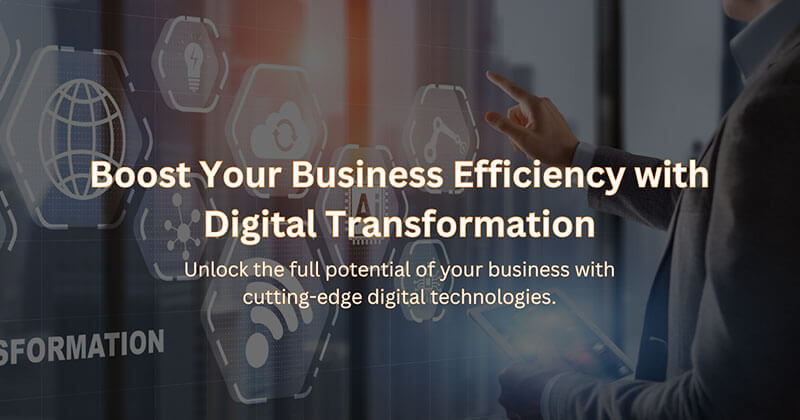How to Choose the Best Technology Stack in 2024 for Web and Mobile App Development
Selecting the optimal technology stack is crucial for the success of your web or mobile application. This guide explores key factors to consider, such as business objectives, scalability, cost efficiency, security, and time-to-market. It also examines popular tech stacks like MERN, LAMP, MEAN, and .NET Core, and discusses emerging trends in cloud-native architectures and AI/ML integration.
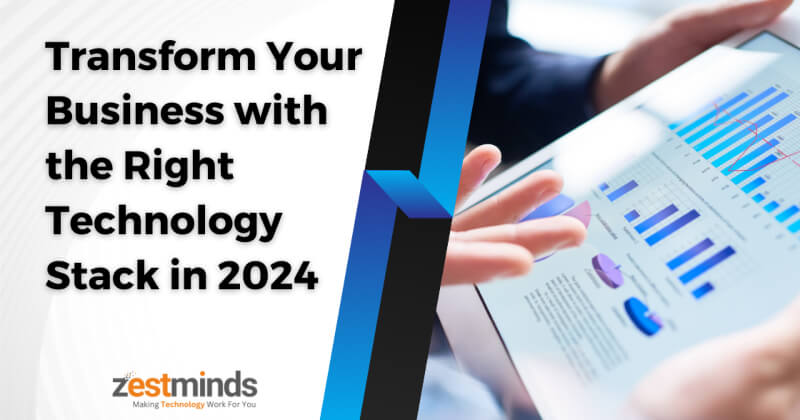
In 2024, digital transformation continues to push small and medium-sized businesses (SMBs) towards modernization. A key component of this shift is the selection of the appropriate technology stack, which can significantly impact not only the performance of your digital platforms but also your scalability, security, and future growth potential.
This guide outlines essential factors to consider when selecting the best technology stack for your web or mobile development projects. We will cover popular tech stacks such as MERN, LAMP, MEAN, and .NET Core, alongside exploring technology trends in 2024, including cloud-native architectures and the integration of AI/ML.
What is a Technology Stack?
A technology stack comprises the programming languages, frameworks, and tools that developers use to construct both the frontend (what users interact with) and the backend (what manages the server-side processes) of an application. The selection of a suitable tech stack can ensure your platform’s performance is not only smooth but also scalable and secure, be it a web application or a mobile app.
Frontend (Client-side) Technologies for Web and Mobile Development
The frontend is the visual layer users interact with on websites or apps. Core technologies for building the frontend include:
- HTML (HyperText Markup Language) for structure
- CSS (Cascading Style Sheets) for styling
- JavaScript for interactivity
Frameworks like the following are often employed to accelerate development and improve user experience:
- React.js
- Angular
- Vue.js
For example, React.js is highly efficient for developing single-page applications that require fast, interactive interfaces, making it a favored choice for building scalable web platforms in 2024.
Backend (Server-side) Technologies for Scalable Applications
The backend powers the server-side processes—handling user requests, managing databases, and ensuring security. Common backend frameworks and languages include:
- Node.js with Express.js
- Python Django
- Ruby on Rails
- PHP
For instance, Node.js is particularly well-suited for real-time applications such as messaging platforms, where it excels at managing a high number of concurrent connections. Learn more about Django on its official site.
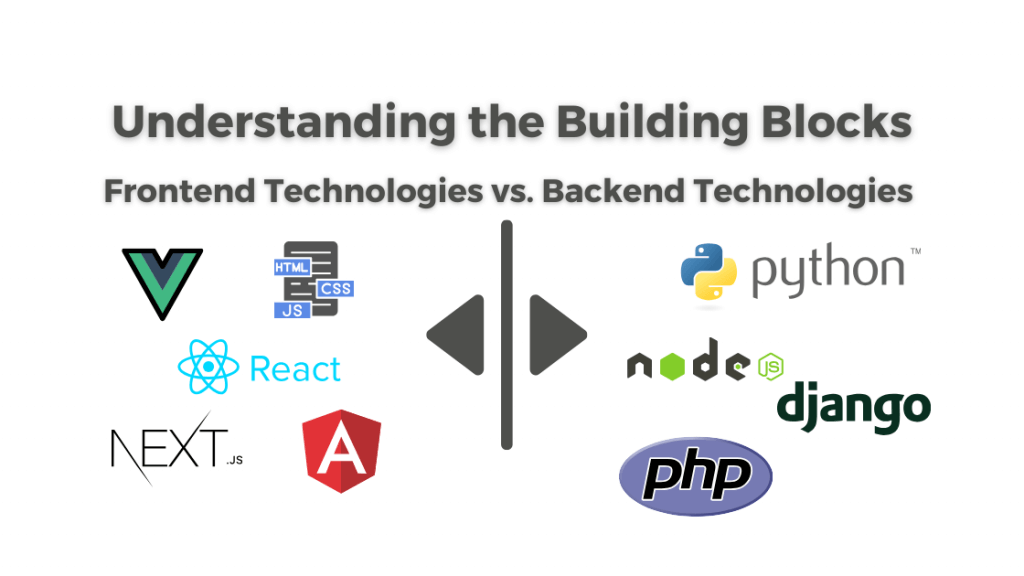
Frontend vs. Backend: Understanding the Building Blocks of Your Application
Key Factors to Consider When Choosing the Best Tech Stack for 2024
Selecting a technology stack isn't just about using what's popular. You need to align your choices with your business’s specific needs, future goals, and scalability plans. Here are some critical considerations:
1. Business Goals and Objectives
Your tech stack must reflect your long-term objectives. For example, an e-commerce website will prioritize quick load times and secure payment gateways. Choosing the right tech stack is particularly important for ensuring that your platform grows with your business. Explore more about no-code and low-code platforms.
2. Scalability for Web and Mobile Apps
As your business grows, your platform needs to handle more traffic and data efficiently. Tech stacks like MERN and MEAN (MongoDB, Express.js, Angular/React.js, Node.js) are designed for scalability, making them excellent choices for fast-growing startups. Check out MongoDB’s scalability features on their official site.
3. Cost Efficiency for Startups and SMBs
Budget constraints often dictate the technology you use. The LAMP stack (Linux, Apache, MySQL, PHP) is an open-source option, meaning no hefty licensing fees. It’s ideal for small to medium-sized businesses looking for a cost-effective solution. See examples of top PHP websites for more inspiration.
4. Security for Scalable Applications
Security is crucial, especially for platforms handling sensitive data. Some stacks are inherently more secure than others. For example, Spring Boot (Java) and .NET Core come with built-in security measures like protection against SQL injections and cross-site scripting (XSS). Read more about Spring Security.
5. Time-to-Market for MVP Development
In today’s fast-paced market, rapid development is key to gaining a competitive edge. Frameworks like Python Django and Ruby on Rails offer fast setup times and extensive libraries, perfect for getting a Minimum Viable Product (MVP) ready quickly. For more, visit Django’s official site.
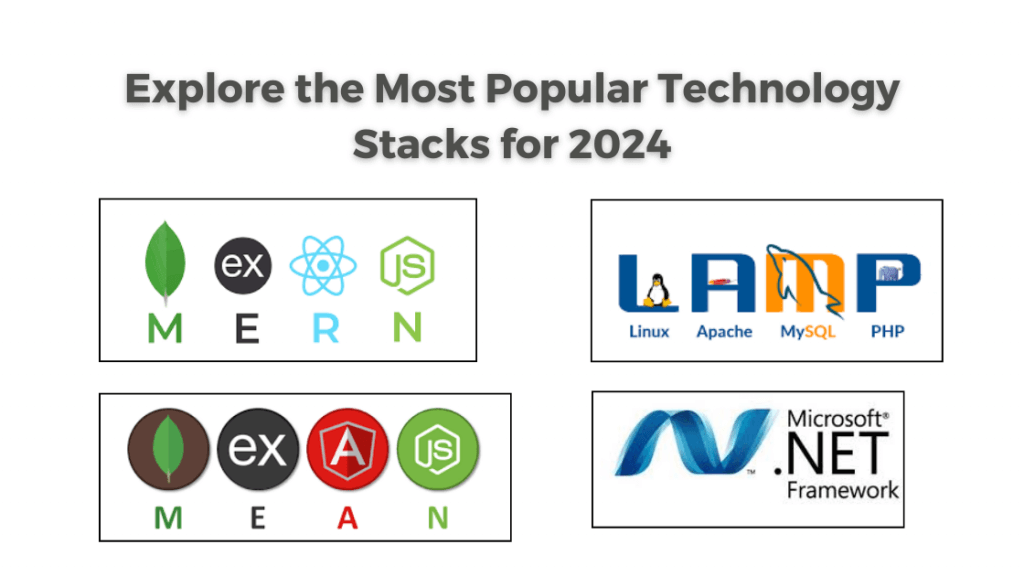
Explore the Most Popular Technology Stacks for 2024
Top Technology Stack Choices for Web and Mobile App Development in 2024
MERN Stack (MongoDB, Express.js, React.js, Node.js)
The MERN stack is a go-to for building modern, scalable web apps. With MongoDB, Express.js, React.js, and Node.js working together, it enables efficient handling of data and real-time updates, making it ideal for fast, interactive applications. Discover more on MongoDB’s official site.
Real-World Example:
Facebook employs React.js to ensure rapid, seamless user experiences across devices, proving the stack’s versatility for large-scale applications.
LAMP Stack (Linux, Apache, MySQL, PHP)
The LAMP stack powers many websites and content management systems, including WordPress. Its open-source nature makes it an affordable option for businesses looking to develop dynamic web applications.
Real-World Example:
With over 40% of the web running on WordPress, the LAMP stack shows its capability to support a diverse range of websites, from personal blogs to enterprise portals.
MEAN Stack (MongoDB, Express.js, Angular, Node.js)
The MEAN stack is popular for creating scalable, data-rich web applications. Combining MongoDB, Angular, Express.js, and Node.js, this stack is perfect for full-stack JavaScript development, offering end-to-end compatibility.
Comparative Analysis: MERN vs. MEAN
- React.js (MERN) is focused on building user interfaces with simplicity, while Angular (MEAN) offers a complete framework with advanced features for larger, more structured projects.
.NET Core
.NET Core, developed by Microsoft, is a robust cross-platform framework that’s ideal for enterprise-level applications needing high security, performance, and scalability. Explore Microsoft’s official documentation for more insights.
Industry-Specific Use Case:
In the financial services sector, .NET Core is favored for its stringent security measures, making it a strong choice for handling sensitive data. Companies like JP Morgan rely on this technology for their applications.
Technology Trends to Watch in 2024
Cloud-Native Architectures for Scalable Web and Mobile Apps
As businesses migrate to the cloud, cloud-native architectures such as Kubernetes and Docker are redefining the way applications are built and managed. These technologies help businesses scale quickly while reducing operational costs. Learn more about Kubernetes on their official site.
Case Study:
Leading platforms like Netflix use Kubernetes to manage microservices and deliver content to millions of users efficiently.
AI and Machine Learning Integration for Web and Mobile Development
The integration of AI and Machine Learning (ML) into applications is no longer a trend but a necessity for businesses seeking to gain insights and automate processes. Frameworks like Django can seamlessly incorporate AI/ML models, enhancing the value of web applications. Learn more at Django’s official site.
Industry-Specific Use Case:
In the healthcare sector, companies such as IBM Watson Health use AI to provide predictive diagnostics and personalized treatment plans.
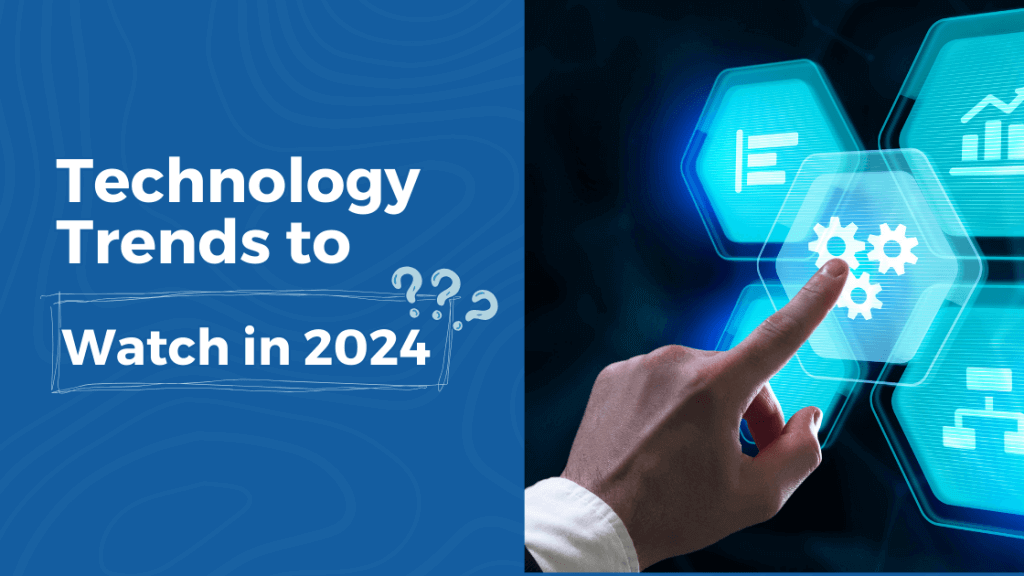
Technology Trends to Watch in 2024: Cloud-Native Architectures & AI/ML Integration
Why Choosing the Right Tech Stack Matters for MVP Development
When building a Minimum Viable Product (MVP), selecting the right technology stack becomes even more important. Your MVP must be built quickly while ensuring room for future scalability. Popular stacks like MERN and MEAN are known for their flexibility, allowing startups to launch and grow without changing the core tech architecture.
At Zestminds, we help SMBs navigate digital transformation with the most suitable technology stacks. Whether you’re building an MVP or scaling a full-fledged application, our team has the expertise to guide you through the process. Explore our success stories and learn more here.

Ready to Transform Your Business? Contact Zestminds for a Free Consultation!
Conclusion
Choosing the right technology stack is crucial for the success of your web or mobile application. Whether you opt for MERN for modern, scalable web apps, LAMP for a cost-effective, flexible solution, or .NET Core for enterprise-level security, your decision should reflect your business goals and future growth potential.
As you venture into 2024 and beyond, stay informed about trends like cloud-native architectures and AI/ML integration that will continue shaping the tech landscape. Choosing the right technology stack today ensures that your business stays competitive tomorrow.
Contact Zestminds today to begin your digital transformation journey and discover how the right technology stack can propel your business forward.

Shivam Sharma
About the Author
With over 13 years of experience in software development, I am the Founder, Director, and CTO of Zestminds, an IT agency specializing in custom software solutions, AI innovation, and digital transformation. I lead a team of skilled engineers, helping businesses streamline processes, optimize performance, and achieve growth through scalable web and mobile applications, AI integration, and automation.
